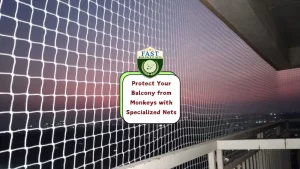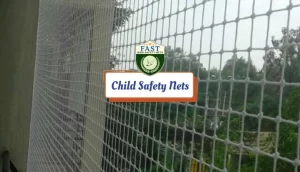Introduction:
Bird netting is a widely used solution for bird control in various settings, including residential, commercial, and agricultural environments. This essay aims to explore how bird netting works and its longevity as an effective bird deterrent. By understanding the functionality and durability of bird nets, individuals can make informed decisions when implementing bird control measures.
Functionality of Bird Netting:
Bird nets works by creating a physical barrier that prevents birds from accessing specific areas. The netting is typically made from durable materials such as nylon or polyethylene, which are lightweight yet strong enough to withstand bird pressure. The netting is stretched over the area to be protected, forming a barrier that birds cannot penetrate. The mesh size of the netting is designed to be small enough to prevent birds from squeezing through while still allowing light, air, and water to pass through.
Bird Net is effective in deterring a wide range of bird species, including pigeons, sparrows, starlings, and seagulls. It is commonly used to protect crops, fruit trees, vineyards, and gardens from bird damage. In urban areas, bird net is installed on buildings, balconies, awnings, and other structures to prevent birds from roosting, nesting, or entering enclosed spaces.
The effectiveness of bird nets relies on proper installation and maintenance. The netting must be securely fastened and tensioned to prevent birds from pushing through or getting trapped. Regular inspections and repairs are necessary to address any damage or wear and tear that may compromise the integrity of the netting.

Longevity of Bird Netting:
The longevity of bird nets depends on various factors, including the quality of the materials used, installation methods, environmental conditions, and maintenance practices. High-quality bird nets made from durable materials can last for several years with proper care and maintenance.
Nylon bird nets is known for its strength and durability, making it a popular choice for long-term bird control solutions. Polyethylene bird netting offers excellent UV resistance and weatherproofing, making it suitable for outdoor installations in harsh environmental conditions.
The lifespan of bird nets can be extended through regular maintenance, such as cleaning, repairing, and replacing damaged sections. Cleaning bird netting helps remove debris, bird droppings, and other contaminants that can degrade the material over time. Repairs should be promptly addressed to prevent birds from exploiting vulnerabilities in the netting.
Environmental factors, such as exposure to sunlight, rain, wind, and temperature fluctuations, can affect the longevity of bird netting. UV radiation can cause degradation and weakening of the netting material over time, leading to brittleness and eventual failure. Proper installation techniques, such as providing adequate support and tensioning, can help mitigate the effects of environmental factors and prolong the lifespan of bird netting.
Conclusion:
Bird Netting is an effective bird control solution that works by creating a physical barrier to prevent birds from accessing specific areas. It is commonly used in agricultural, residential, and commercial settings to protect crops, structures, and property from bird damage. With proper care and maintenance, high-quality bird netting can provide long-term bird control solutions for various applications.






